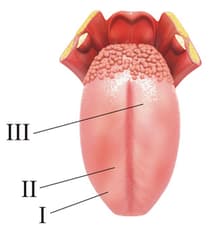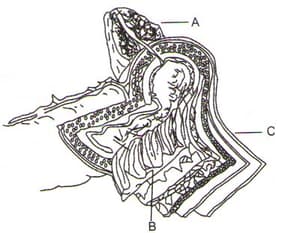EASY
Earn 100
Fill in the blank with the correct option provided in the bracket.
(Sublingual gland/Parotid gland/Submaxillary gland) the largest salivary gland in the human body.
50% studentsanswered this correctly
Important Questions on Digestion and Absorption
EASY
EASY
EASY
EASY
MEDIUM
EASY
Study the following diagram of human tongue and identify the part I, II, and III

EASY
EASY
MEDIUM
MEDIUM
EASY
EASY
MEDIUM
A. In humans, the small intestine is the longest portion of the alimentary canal.
B. Absorption of digested food requires a very large surface area.
Identify the correct choice on the two statements.
EASY
MEDIUM
MEDIUM

EASY
EASY
EASY

